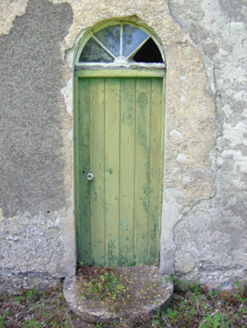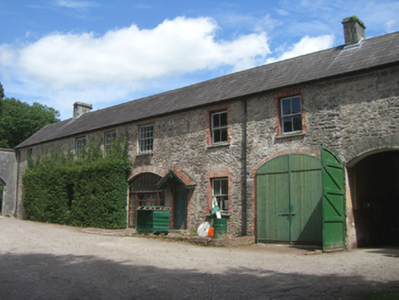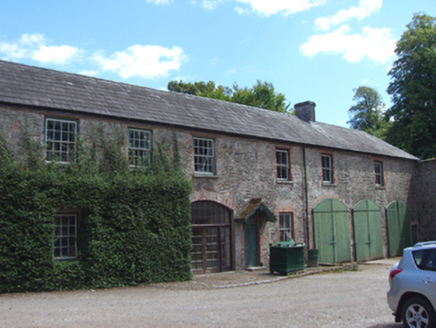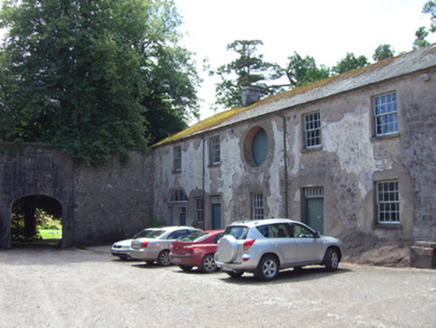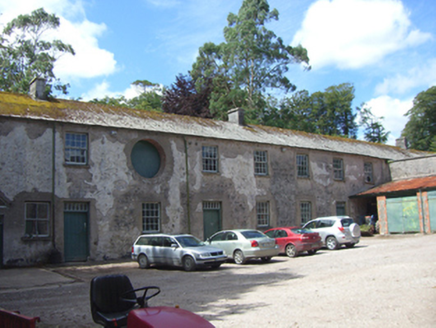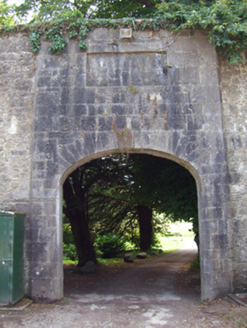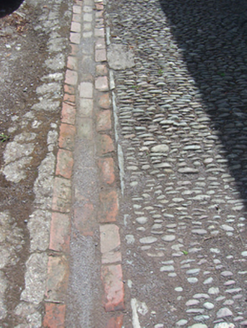Survey Data
Reg No
20907573
Rating
Regional
Categories of Special Interest
Architectural
Previous Name
Foaty House
Original Use
Farmyard complex
In Use As
Farmyard complex
Date
1800 - 1840
Coordinates
179029, 71351
Date Recorded
23/07/2007
Date Updated
--/--/--
Description
Farmyard complex, built c. 1820, comprising two multiple-bay two-storey blocks, that to east double-pile, that to west extending beyond north wall of yard forming secondary yard to north-west. Primary yard enclosed to north and south by rubble limestone walls. Pitched slate roofs to east block, pitched corrugated asbestos roof to west block, both having ashlar limestone chimneystacks and cast-iron rainwater goods. Exposed random rubble limestone walls, some render remaining to west block and rear (east) elevation of east block. Square-headed openings with cut limestone sills, red brick surrounds and eight-over-eight pane timber sliding sash windows. Circular openings to first floor of west block. Square-headed door openings with timber battened doors and fixed pane overlights. Round-headed door opening to east elevation of east block with spoked fanlight and square-headed timber battened door. Segmental-arched carriage arch openings to enclosing walls to north and south of yard, comprising coursed tooled limestone walls with square-headed blind openings and tooled limestone voussoirs. Cobbles with red brick drainage channels to ground surface of yard.
Appraisal
Well-constructed utilitarian farmyard complex associated with the running of Fota House demesne in the nineteenth century, built when the house was expanded to form the principle residence of John Barry Smith. Notable features include the entrance arches, timber windows and early fanlight. Fota House and its associated demesne structures were completed in the 1820s to the designs of Sir Richard Morrison and his son William Vitruvius Morrison, some of the most influential architects in Ireland during the nineteenth century. The Fota House demesne once comprised the whole island, the survival of its utilitarian and distinguished demesne structures adds significantly to Ireland's national heritage.
